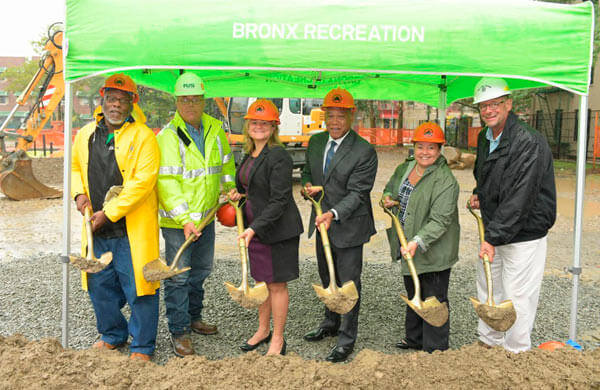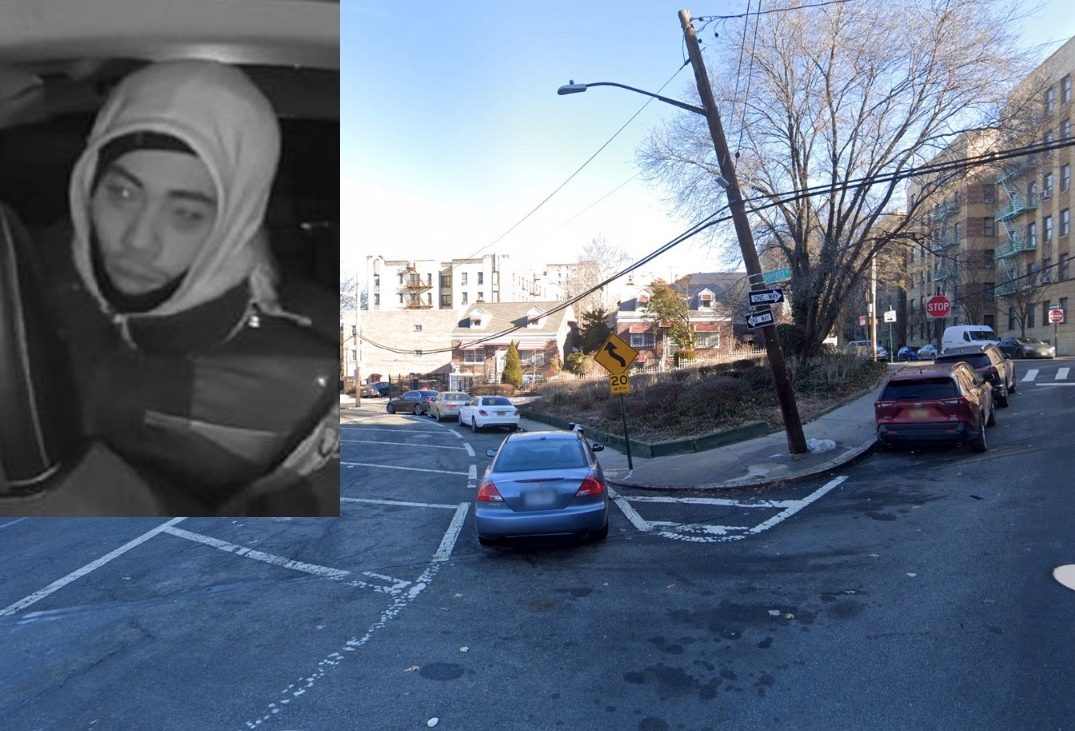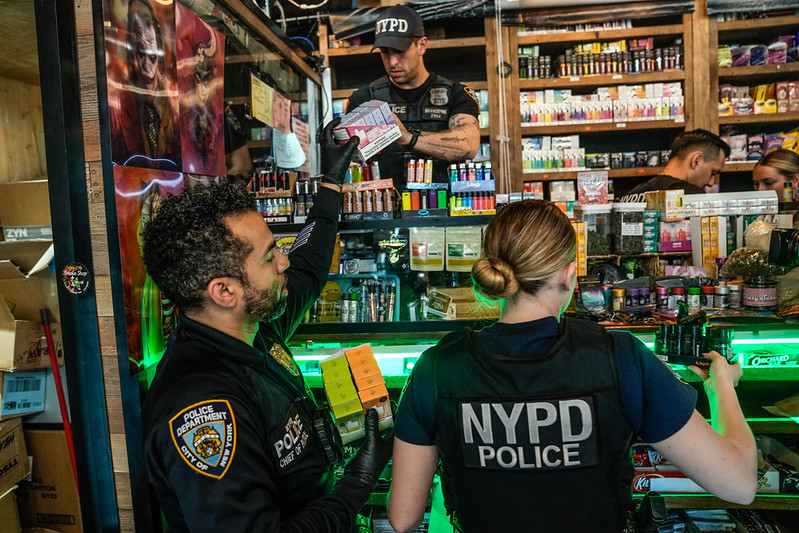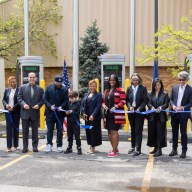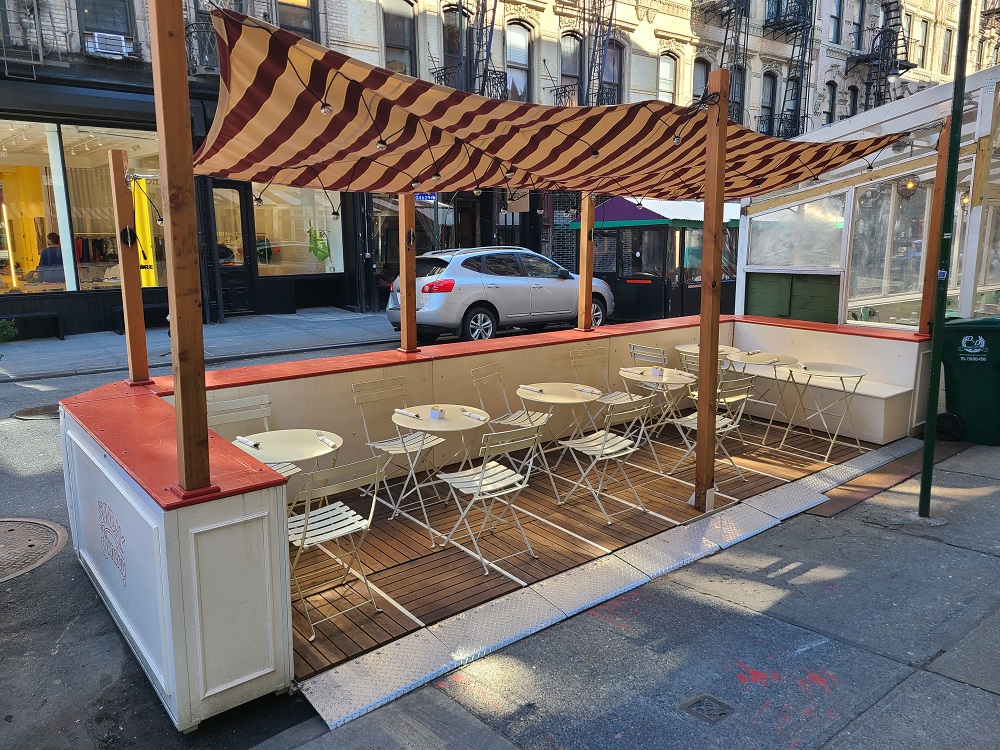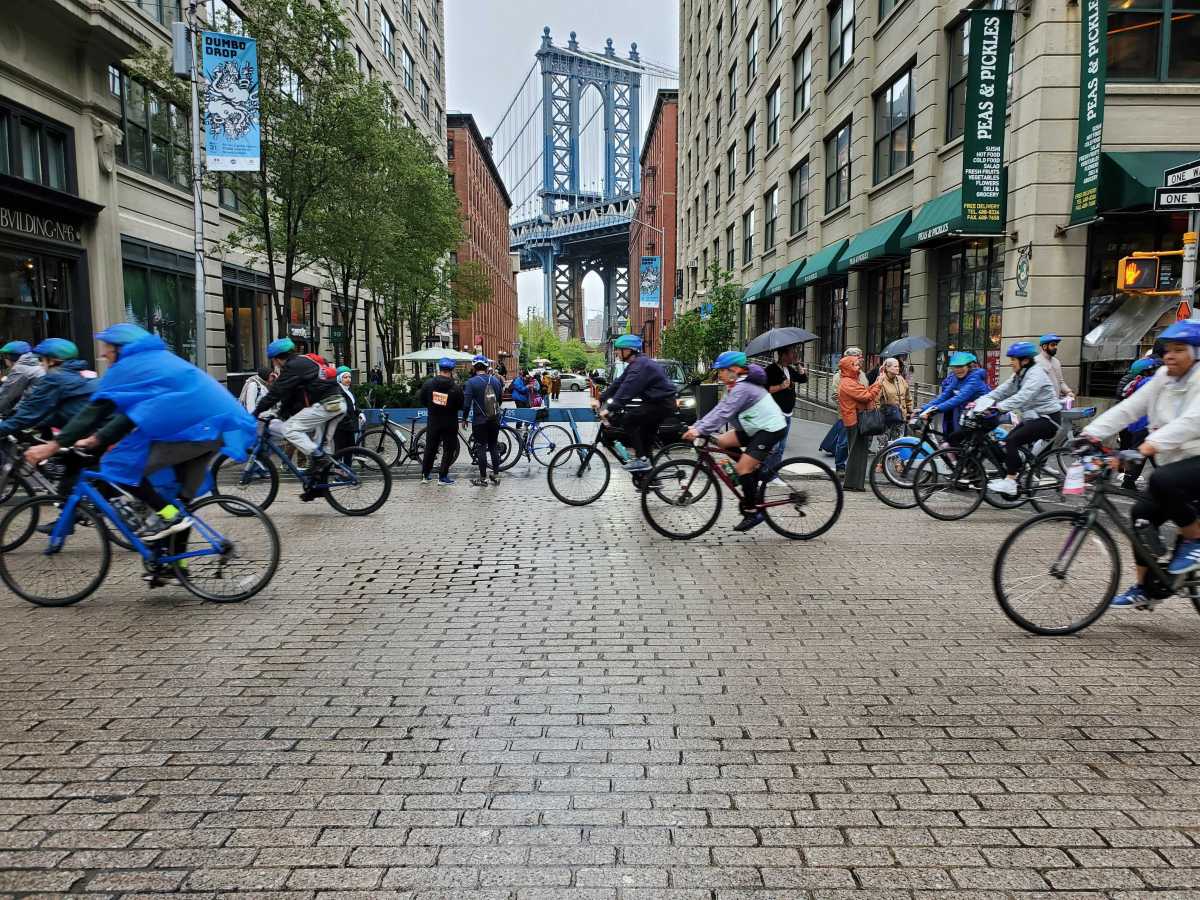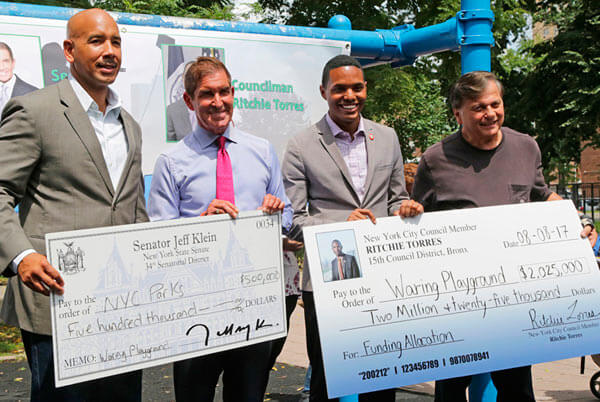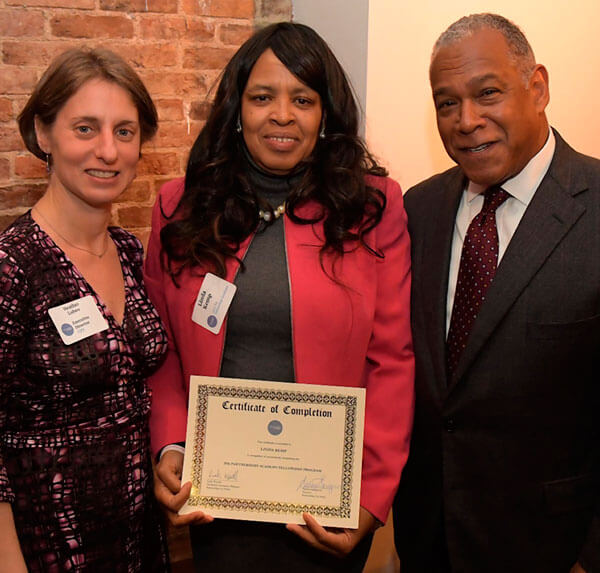NYC officials broke ground Monday, July 24, on a $5.86 million renovation project to reconstruct Saw Mill Playground, adding multi-age play areas, a track, new ball courts, a new comfort station and more.
“Tasked by the mayor early in my tenure as Parks commissioner to create a fair and balanced park system for our city, it is great to see three years later so many Community Parks Initiative sites begin construction in underserved neighborhoods,” said Mitchell J. Silver.
Landscape architects Quennell Rothschild & Partners are transforming this expanse of cracked asphalt lot into a $4 million playground packed with features requested by the community: a turf sports field with misting posts, running track, children’s water play, new play equipment and basketball, youth fitness area, new comfort station, lush plantings, and plenty of places to sit in the shade and relax.
Students at P.S. 179, across the street from the playground, as well as local families will have a safe, comfortable and green place to play and relax.
Ground breakings symbolize the beginning of a transformation of such parks as Saw Mill into enhanced recreational assets for the communities they serve, according to Silver, who was joined by NYC council speaker Melissa Mark-Viverito and Community Board 1 Parks Committee chairman Hakiem Yahmadi.
Almost all CPI sites are now under construction and many of the first group of sites are set to open this summer. CPI was initially launched in 2014, and is funded through 2019 with $315 million to renovate more than 60 community parks that have not undergone significant improvements in decades.
All of the parks and playgrounds that will receive improvements are in dense, fast-growing neighborhoods with an above-average percentage of residents living below the poverty level.
Located in Mott Haven, this playground is named for the Saw Mill Creek, also known as the Mill Brook, which once flowed by this parkland. The creek originated at Gates Place in the north Bronx, ran along what is now Brook and Webster avenues, and emptied into the Bronx Kill.
The early sawmill, devised in 1352 in Europe, was dependent on water as both a power source and a means of transporting goods. Logs were floated down river to sawmills, which cut raw lumber into standardized shapes and sizes for building purposes. The sawmills flourished along the many tributaries of Bronx waterways for more than 200 years. Another byproduct of the sawing process was wood pulp, from which paper is made. Due to the abundance of lumber and waterpower in the Hudson River Valley, sawmills became a popular and lucrative industry for 17th century European settlers.
Quennell Rothschild & Partners are landscape architects who have created and restored numerous parks, plazas, streetscapes and cultural facilities. Over its 50-year history, QRP has developed a reputation for innovation and consensus building.
Among the firm’s projects are The Battery, the master plan for Hudson River Park, the transformation of more than a mile of beachfront at Far Rockaway Park, and multiple projects at Princeton University.

